‘Mudra’, a Sanskrit word, means a symbolic hand gesture that has the power of producing joy and happiness. It has been an integral part of many Hindu and Buddhist rituals. It has been proved that regular practise of mudras not only contribute to one’s overall good health but can be used as a preventive measure as well. Our hands define our karma and fingers being the power points, are a link between individual Pranic force and universal cosmic energy.
The position of our hands has the ability to influence energy of our physical, emotional, and spiritual body. Mudras help to link the brain to the body, soothe pain, stimulate endorphins, change the mood, and increase our vitality.
Significance of Yoga Mudras
Entirely distinct and based on the principle of Ayurveda, yoga mudras are understood as a healing modality. The Sanskrit word mudra is translated as a gesture. A mudra may involve the whole body or could be a simple hand position. Mudras used in combination with yoga breathing exercises enliven the flow of prana in the body, thereby energizing different parts of the body.
There are more than 100 known mudras that have been developed over the centuries so discussing all of them is not possible, and its not needed too. Let’s just look at some of the most popular and beneficial ones:
1. Dhyana Mudra: Gesture of Meditation
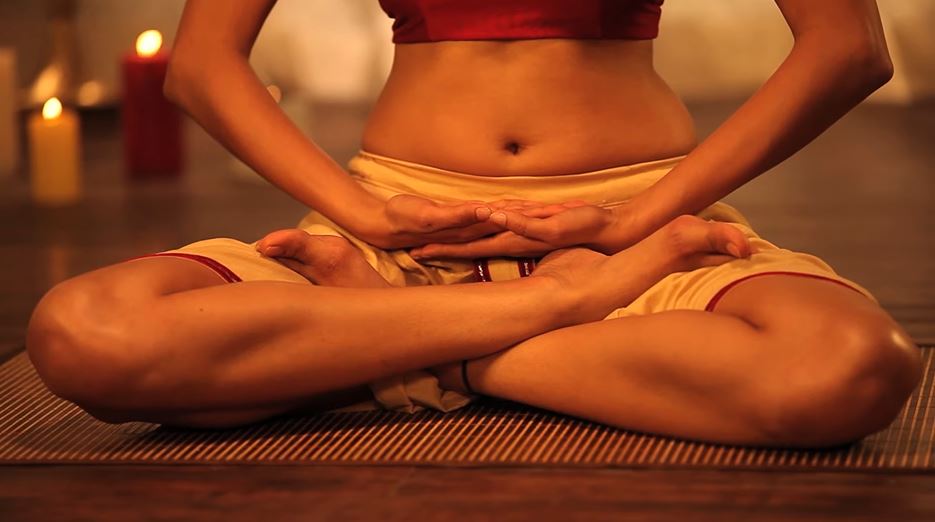
The Dhyana mudra is shared across several eastern meditation disciplines. The Buddha is often pictured doing this gesture. The significance of this mudra is to bring you into deeper, more profound concentration. This gesture can also help bring you tranquility and inner peace.
Benefits: This mudra helps to relax your mind and release the stress, anxiety and depression. It also helps to move you towards the enlightenment.
How to Do: Keep both your hands resting on your legs while keeping the right hand over the left. The palms should be facing upwards and fingers extended.
2. Gyan/Jnana Mudra: The Gesture of Knowledge or Wisdom
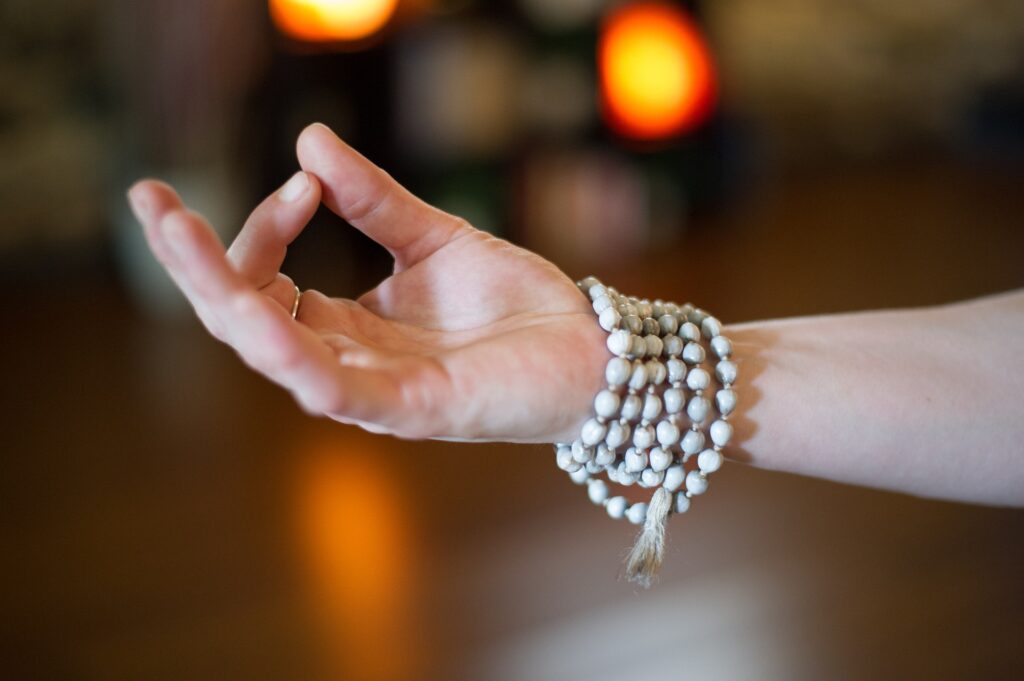
This is probably the most familiar mudra in mainstream society. Meditators are often seen pairing this mudra with their practice. The intention of the Gyan mudra is to improve your concentration and sharpen your memory. This is a great mudra to use when seeking to gain knowledge. Try holding this mudra while meditating for insight into your life or a specific issue.
Benefits: The Gyan Mudra stimulates the root chakra, easing tension and depression. It relates to expansion and knowledge. It is extremely calming and brings the practitioner spiritual openness and ease in meditation.
How to Do: This pose is performed by touching the index finger with the thumb while keeping the other three fingers straight. It is best to perform this pose in the early morning for 35 to 40 minutes at a stretch.
3. Prithvi Mudra: The Gesture of the Earth
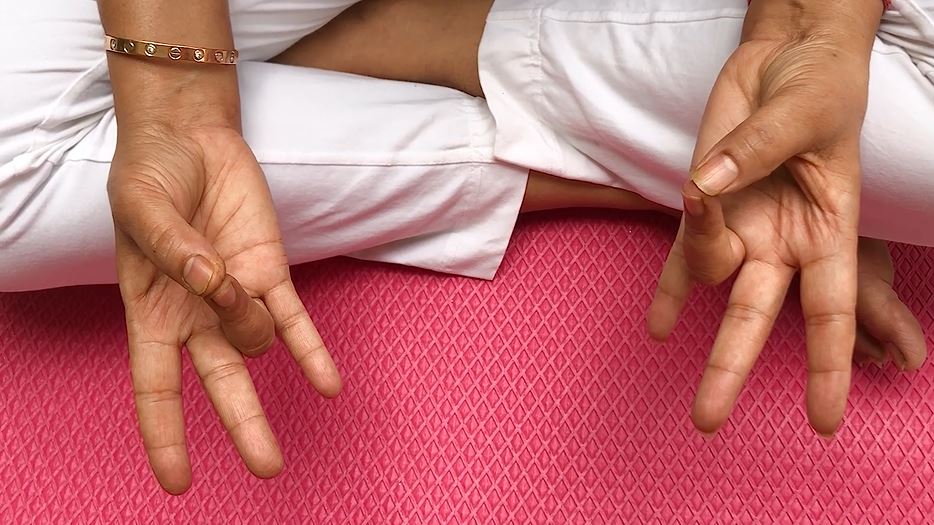
Prithvi mudra is a symbolic hand gesture or ‘seal’ used in yoga and Ayurveda to promote healing and spiritual balance within the body. Meaning “the vast one” in Sanskrit, prithvi is also the term used for the Earth element in Ayurveda. Otherwise known as ‘Earth Mudra’, prithvi mudra can be used to balance this element, which resides primarily within tissues, such as skin, hair and bones.
Benefits:
- It improves blood circulation throughout the body.
- Increases patience and tolerance.
- Increases concentration while meditating.
- Helps strengthen weak and lean bones.
- It reduces weakness, exhaustion, and dullness of mind by creating a grounding effect as the name of this mudra suggests.
- This mudra makes you more beautiful by improving your complexion and giving a natural glow to your skin.
How to Do: Touch the tip of your ring finger with the tip of your thumb. Pressing the tips of these two fingers, keep the rest of the fingers extended out. It is preferable that you perform this mudra in the morning. However you may even do it at any time of the day and for any duration. As the name suggests, it is a grounding mudra, and hence, a lotus stance is very helpful to reap benefits of this mudra. Sit in a padmasana keeping the palms of both your hands on your knees with straight elbows. Perform this asana when you feel stressed out and exhausted. Padmasana accompanied by this mudra will immediately perk you up. This is also an amazing mudra yoga for glowing skin.
4. Prana Mudra: The Gesture of Life
The Prana mudra is said to be one of the most important mudras due to its ability to activate dormant energy in your body. Prana is the vital life force within all living things. This mudra will help awaken and enliven your personal prana, and put you more in tune with the prana around you.
Benefits: This mudra improves your immune system. This improves eye power and sharpness of your vision. It also cures eye diseases and reduces tiredness.
How to Do: Touch the tip of the thumb with the ring finger and the little finger together, while keeping the other two fingers straight. Take a regular breath, breathe in and exhale for a few seconds. You can also chant So-Hum while inhaling and hum on while exhaling. 30 to 40 minutes every day is enough to see results.
5. Surya Mudra: The Fire Hand Gesture
Sanskrit word “Surya” means sun and here “mudra” means hand gesture. Hence, Surya mudra is basically finger arrangement (gesture) that represents energy our body gain through sunlight. The energy of the sun also represents with Fire element of the body. Sanskrit term for fire is ‘Agni‘, therefore Surya mudra also known as Agni mudra. To make an optimum balance among 5 elements of the body, Surya Mudra eliminates the earth element and increases the fire element. therefore, Surya Mudra is also known as Agni vardhak (fire increaser) mudra.
Benefits: Performing this mudra activates the fire energy in the body, and allows you to restore the fire balance. Doing the mudras allow the fingers to form connections and facilitate the flow of energy in the body.
In the weight loss process, several people find difficulty in reducing fat due to poor digestive health. The fire element present in the Surya mudra is known to improve digestion by boosting the metabolism in the body. Regular practice can significantly aid in fat loss.
How to Do: First, sit upright with the back straight. Move the ring finger towards the palm of the hand and join it with the thumb. Place your hands on your thighs and knees and remain seated in this position. In the meantime, you can perform breathing techniques or meditation. The Surya mudra is to be performed for 45 minutes each day, and with 15-minute intervals between each time. The Surya mudra yields more benefits when practiced early in the day.
6. Buddhi Mudra: Gesture of Higher Mind or Intellect
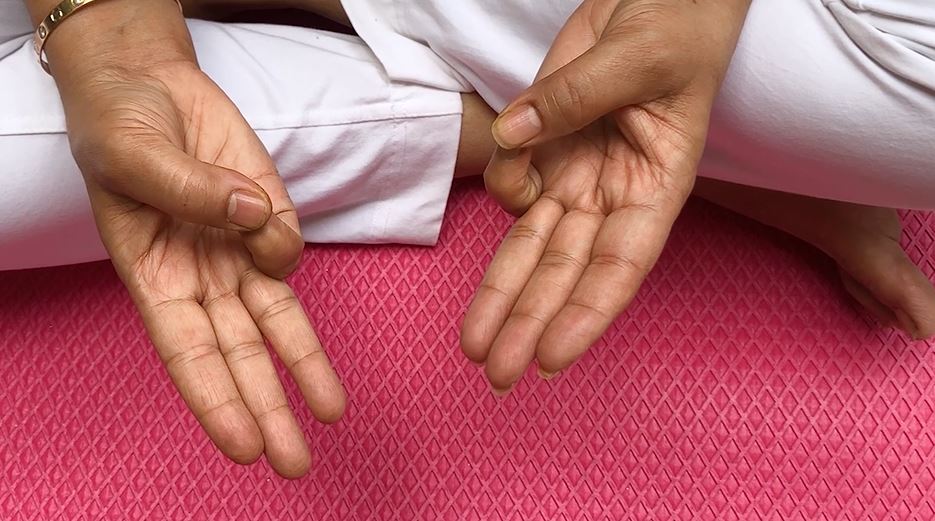
This mudra is used for mental clarity. You perform this gesture when you need to understand intuitive messages from your subconscious (i.e., dreams or meditations that puzzle you). One of the most powerful benefits of this mudra can be found in the improvement of communication, such as improving internal and external dialogue.
Benefits: In English, this mudra is known as the seal of mental clarity. When the little finger, which symbolizes water and communication, touches the thumb, which represents divine nature and fire, the buddhi mudra signifies fluid communication and access to inner knowledge.
Practicing buddhi mudra is thought to develop psychic, intuitive energy and cure or provide relief from a range of diseases and ailments that result from a lack of water in the body, including:
- Digestive issues, including indigestion and constipation.
- Skin disorders such as eczema and psoriasis.
- Anemia and other blood-related problems.
- Disorders related to the bladder and kidneys.
How to Do: To perform this mudra, the tip of the little finger and the tip of the thumb touch with light pressure, and the other three fingers remain comfortably extended.
7. Chin Mudra: Psychic Gesture of Consciousness
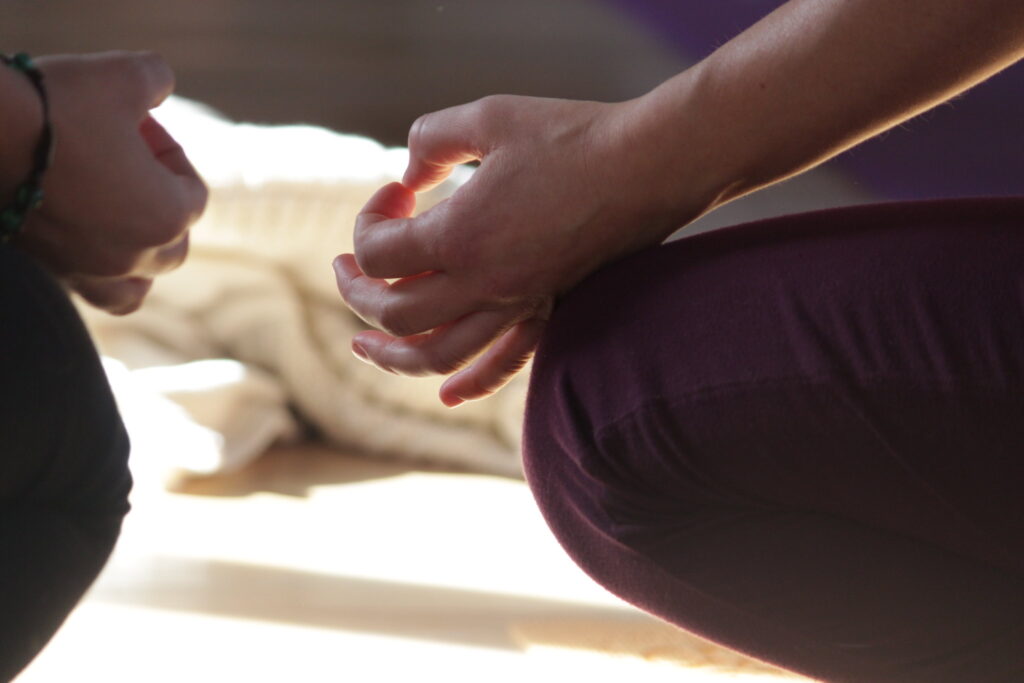
Chin mudra is performed in the same way as Gyan mudra, except that the palms of both hands facing upwards, with the back of the hands resting on the knees.
Benefits: This Mudra helps to cure insomnia and improves concentration and memory power. Regular practice of this mudra can eliminate all psychological disorders like anger, depression, stress and anxiety. Moreover, it also improves sleep pattern, increases energy in the body and alleviates lower backache.
How to Do: Hold the thumb and index finger together lightly while extending the remaining three fingers. The thumb and index finger need only touch together, without exerting any pressure. Keep the three extended fingers as straight as possible. The hands can then be placed on the thighs, facing upwards. Now, observe the flow of breath and its effect.
8. Adi Mudra: First Gesture
This is a symbolic and ritualistic gesture of the hands used in a spiritual yoga practice to calm the mind and nervous system.
Benefits: This mudra relaxes the nervous system and helps to reduce snoring. It also improves the flow of oxygen to the brain and increases capacity of the lungs.
How to Do: The thumb is placed at the base of the small finger and the remaining fingers curl over the thumb, forming a light fist. Now, place your hands on the knees with palms facing upwards and take deep comfortable breaths.
9. Varun Mudra: The Gesture of Water
This Mudra reduces the dryness of the skin and helps to improve its luster and softness. It also helps cure many skin diseases. It is known as a seat of mental clarity. It encourages openness and fluid communication and balances the water element in the body.
Benefits: This mudra helps to activate fluid circulation within the body keeping it moisturized. It cures skin diseases, infections and prevents the appearance of pimples. It adds a natural glow to your face and prevents muscle pains.
How to Do: Slightly touch the tip of the thumb with the little finger, then put some pressure and see the difference. There is no time limit for doing this Mudra and can be done anytime and anywhere. It is better to sit cross-legged for better form and result.
10. Vayu Mudra: The Gesture of Air
The Vayu mudra is good for diseases related to air imbalances, such as gas-related pain, flatulence, joint pain, bloating, and abdominal discomfort. This mudra helps regulate Vata-related issues, both mental and physical, relieving them by bringing your air element back into its proper flow.
Benefits: As the name suggests vaayu mudra, it balances the air element within your body. This mudra releases excess wind from stomach and body, thereby reducing rheumatic and chest pain and helping in relieving abdominal gas.
How to Do: Bend your index finger and press it with your thumb while keeping other fingers straight. Perform this pose for 45 minutes at a stretch every day, or for 10 to 15 minutes three times a day. It can be done anytime and anywhere.
11. Anjali Mudra: Prayer Gesture
Anjali Mudra is considered to be the most familiar mudra where the palms are brought together in front of the heart space. Anjali means “offering,” and in India this mudra is often accompanied by the word “namaste.” People practicing yoga begin and end their sessions by articulating the word “Namaste” along with the usage of this mudra, which symbolizes love and honor towards you and the universe. Practicing this mudra helps in connecting the right and left hemispheres of the brain. It also connects the individual’s spirituality and promotes respect for others and oneself. Also, Anjali Mudra acts as a natural remedy to beat stress and anxiety.
Benefits: Placing the hands and palms in a particular way, as in a mudra, regulates the flow of energy and redirects it to a particular area of the body, depedning on the mudra assumed. Practicing anjali mudra promotes flexibility in the wrists and arm joints. It also stimulates the anahata chakra. The mental health benefits include:
- Improves focus during meditation
- Promotes mindfullness and inner awareness
- Calms the mind
- Relieves stress
- Connects the brain’s right and left hemispheres
How to Do: To begin, the yogi enters sukhasana, or easy pose. Bringing the hands together, the palms are placed gently against one another in front of the anahata (heart) chakra. The fingers point upward. The spine is lengthened while sitting comfortably straight. Bringing the hands together in such a way while saying “Namaste” is a respectful greeting. In the yoga community, classes often conclude with this mudra while chanting Om as a way to seal the practice and honor one’s self and fellow yogis.
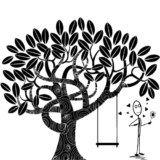




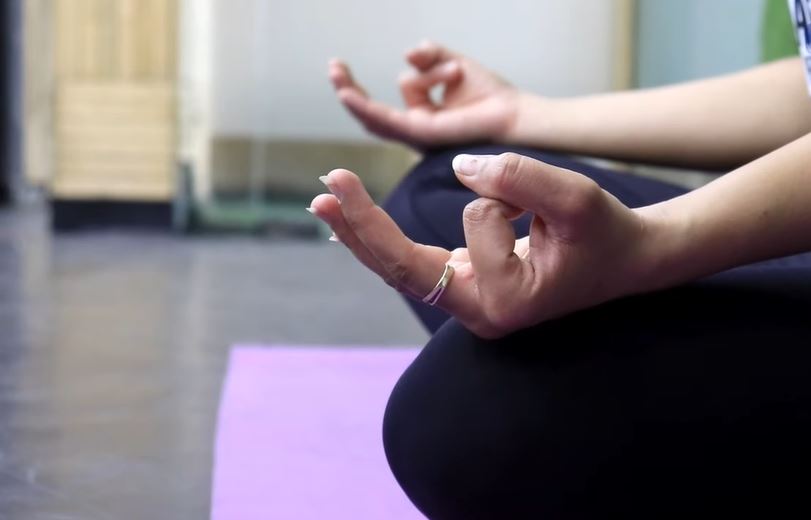

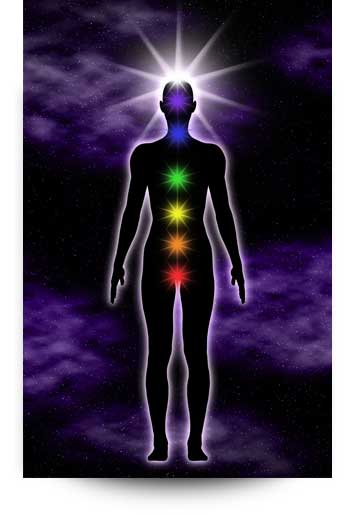

I recently had my websites rebuilt and i am trying to come across new ways to make it better.Your design is quite nice and your posts are well-structured. I though that it would be nice to say that i will use some of your “know-how”.